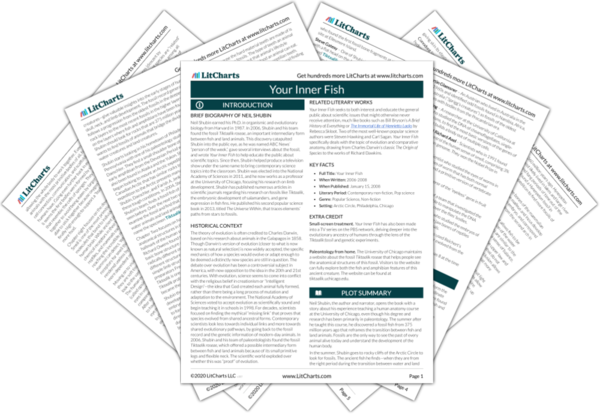The importance of Tiktaalik is not only that it has the limb structure that suggests a movement towards limbs from fins, but also it is the right age. If Tiktaalik were much younger than 375 million, Shubin’s team would have just found another example of a strange amphibian, instead of the origin of limbs. If it were much
older than 375 million, Shubin and his team would have to revise the expected predictions about when animals moved out of the sea, or explain why fish needed limbs if they did not live close to land.
